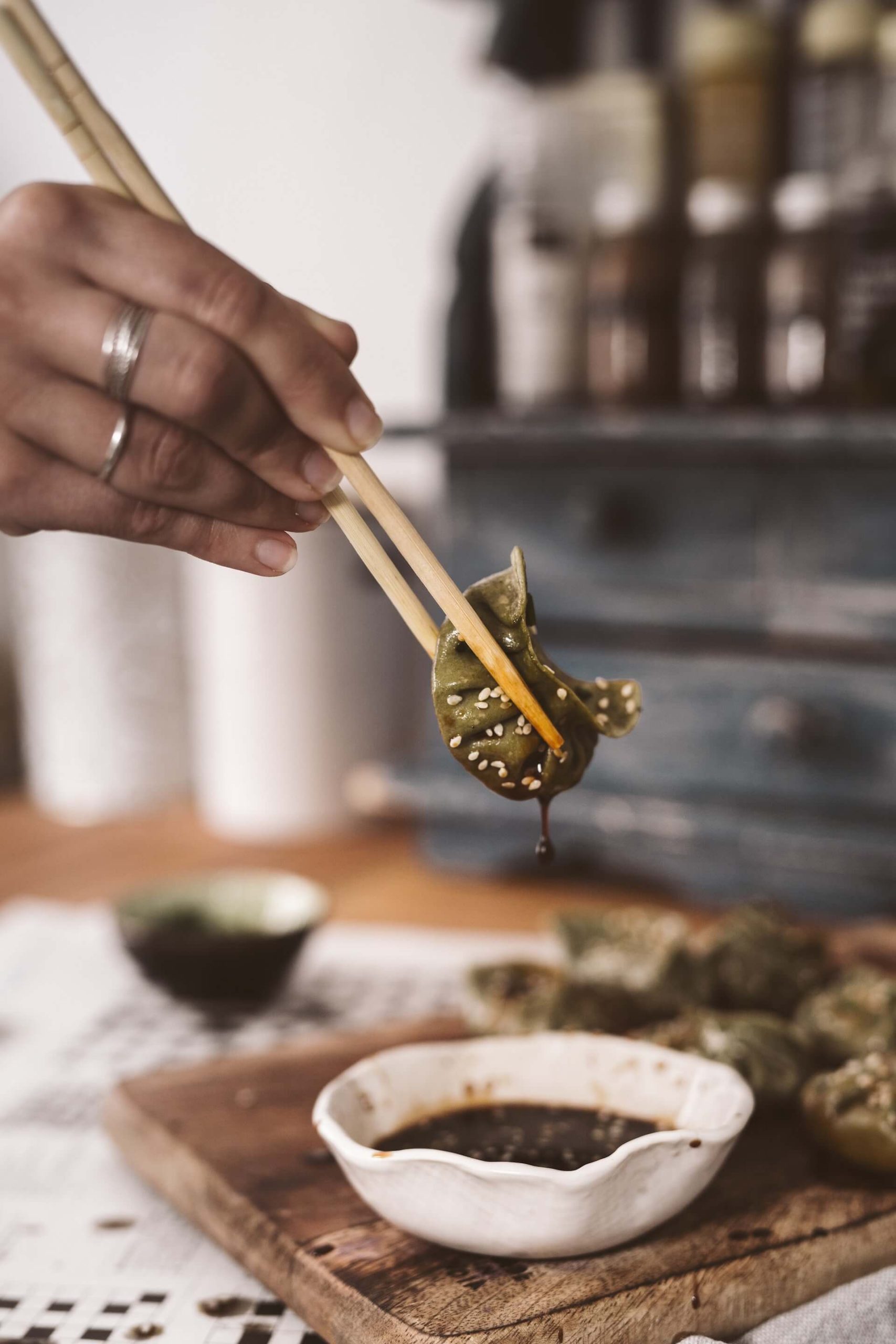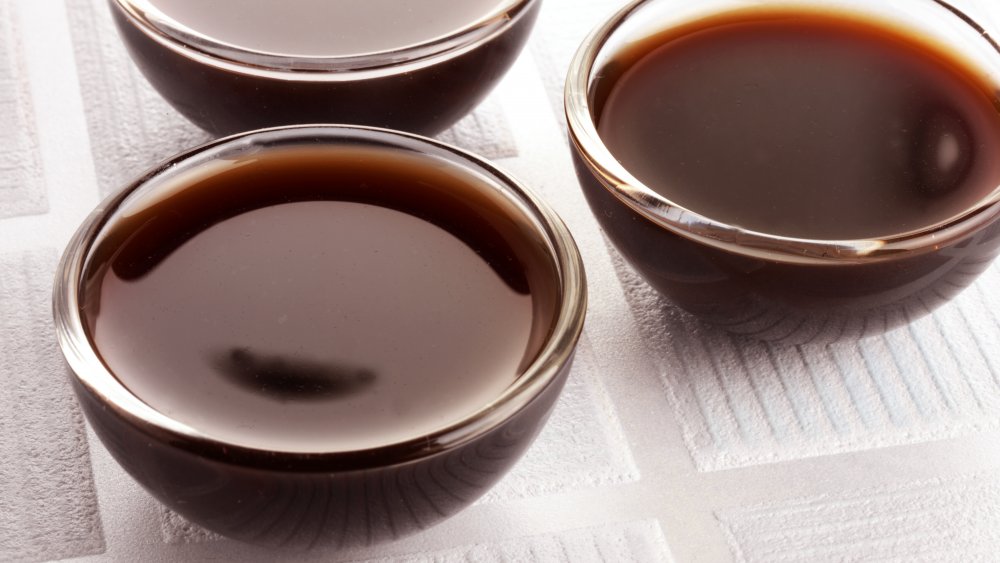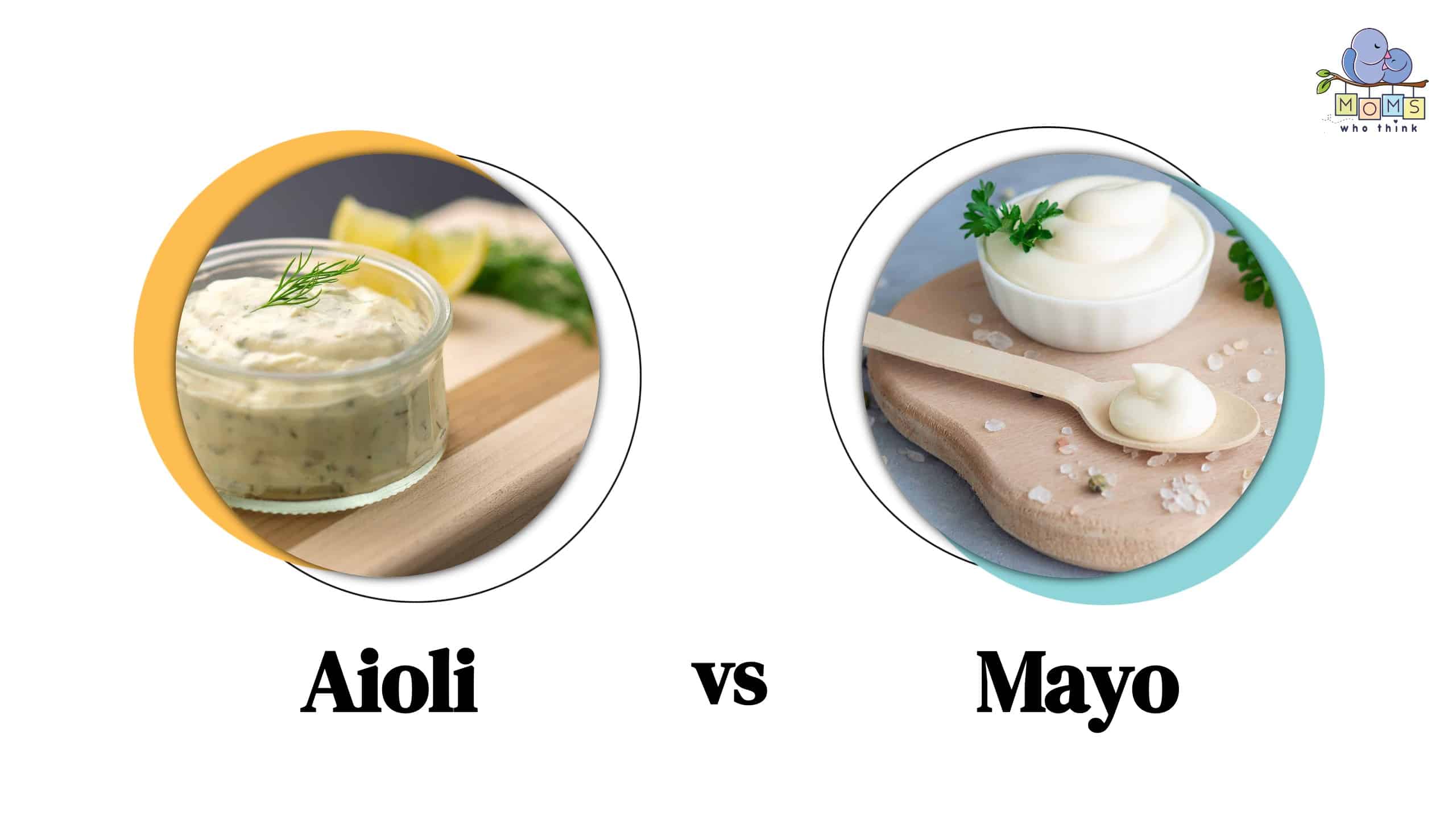Soy Sauce Overview

Soy sauce is a popular condiment originating from East Asia, particularly China and Japan. It is made from fermented soybeans, water, salt, and often other ingredients like wheat or barley. Soy sauce has a rich umami flavor that adds depth and complexity to dishes. It is available in various types, including light, dark, and low-sodium options, each with its own intensity and flavor profile. Soy sauce is widely used in Asian cuisines and is a key ingredient in dishes like stir-fries, marinades, and sushi. Its versatility and rich savory taste make it a must-have in any kitchen.
Types Of Soy Sauce
Soy sauce comes in various types, each with its own distinct characteristics. The two most common types are light and dark soy sauce. Light soy sauce, also known as regular soy sauce, has a thin consistency and a saltier flavor. It is commonly used for seasoning and enhancing the taste of dishes. Dark soy sauce, on the other hand, is thicker and has a deeper color and richer flavor. It is often used for marinating, braising, and adding color to dishes. In addition to light and dark soy sauce, there are also low-sodium options available for those looking to reduce their sodium intake.
Production Process And Ingredients Of Soy Sauce
Soy sauce is made through a fermentation process using soybeans, wheat, water, and salt. The production begins by soaking the soybeans and wheat in water, followed by cooking and crushing the ingredients to create a paste. This paste is then fermented using a mixture of mold and yeast cultures. The fermentation can take several months or even years, allowing the development of complex flavors. After fermentation, the mixture is pressed to extract the liquid, which is then pasteurized and bottled. The result is a flavorful and aromatic sauce that adds depth and umami to a variety of dishes.
Worcestershire Sauce Introduction

Worcestershire Sauce, also known as Worcester sauce, has a long and fascinating history. It originated in the city of Worcester in Worcestershire, England, in the early 19th century. This savory sauce was invented by pharmacists John Wheeley Lea and William Henry Perrins. The recipe was made by fermenting anchovies, garlic, onions, molasses, vinegar, tamarind, and various spices. Worcestershire Sauce has a complex flavor profile, combining tangy, sweet, and savory notes. It adds a unique and distinctive taste to a variety of dishes, making it a staple in many kitchens worldwide.
History And Origin Of Worcestershire Sauce
Worcestershire Sauce, also known as Worcestershire sauce, has a rich history that dates back to the early 19th century. It was created in the city of Worcester in Worcestershire, England, by pharmacists John Wheeley Lea and William Henry Perrins. The two experimented with different ingredients and fermentation methods, eventually crafting a sauce that became a favorite in British households. Originally intended to be a condiment for meat dishes, Worcestershire Sauce gained popularity worldwide and became a staple in kitchens across different cultures. Its unique blend of flavors and versatile uses have made it a beloved ingredient in a wide range of recipes.
Ingredients And Flavor Profile Of Worcestershire Sauce
Worcestershire Sauce is made from a unique blend of ingredients that contribute to its distinct flavor profile. The sauce typically includes vinegar, molasses, anchovies, tamarind, garlic, onions, and various spices and seasonings. These ingredients are fermented and aged, allowing the flavors to develop and intensify over time. Worcestershire Sauce has a rich, savory taste with a hint of sweetness and tanginess. It adds depth and complexity to dishes, enhancing the umami flavors. The combination of ingredients creates a complex and balanced flavor that is both savory and slightly tangy.
Flavor Profile Comparison

When comparing the flavor profiles of soy sauce and Worcestershire sauce, they offer distinct tastes that can enhance different dishes. Soy sauce brings a salty and umami flavor to the table, resulting in a rich and savory experience. On the other hand, Worcestershire sauce has a well-rounded taste with a balance of tangy, sweet, savory, and sour notes. The combination of ingredients in Worcestershire sauce creates a deep and complex flavor that is highly appreciated in various culinary creations. Both sauces can add depth and complexity to dishes, but their flavor profiles offer unique characteristics.
Umami Elements In Soy Sauce
Umami, the fifth taste, is known for its savory and rich characteristics. Soy sauce is renowned for its strong umami flavor, which adds depth to various dishes. The umami elements in soy sauce come from the fermentation of soybeans and wheat, resulting in the production of amino acids and glutamic acid. These compounds enhance the savory taste and create a satisfying culinary experience. The high levels of umami in soy sauce make it a popular choice for marinades, dressings, stir-fries, and as a dipping sauce. Its distinctive umami flavor sets soy sauce apart and makes it a favorite ingredient in many cuisines.
Tangy And Savory Notes Of Worcestershire Sauce
Worcestershire sauce is known for its distinct tangy and savory flavor profile. It adds a unique depth to dishes with its combination of vinegar, molasses, tamarind, and various spices. The tanginess comes from the vinegar and tamarind, while the savory notes are derived from the blend of spices, including garlic, cloves, and anchovies. Worcestershire sauce provides a zesty and slightly sharp taste that complements a variety of dishes. Its complex flavor profile makes it a versatile ingredient in marinades, dressings, soups, and stews.
Culinary Uses

Soy sauce and Worcestershire sauce have their own unique culinary uses that contribute to a wide range of dishes. Soy sauce is commonly used in Asian cuisine, adding depth and umami to stir-fries, marinades, dipping sauces, and sushi. It is also a popular ingredient in dressings, soups, and braised dishes. On the other hand, Worcestershire sauce is often used in Western cooking, enhancing the flavors of meat dishes such as steaks, burgers, and meatloaf. It is also a key component in Bloody Mary cocktails, adding a savory kick to the drink. Both sauces bring distinct flavors and enhance the overall taste of various recipes.
Traditional Dishes Featuring Soy Sauce
Traditional dishes featuring Soy Sauce are a staple in Asian cuisine. Some popular examples include stir-fried dishes like Beef and Broccoli, Sweet and Sour Pork, General Tso’s Chicken, and Vegetable Fried Rice. Soy Sauce is also used in marinades for grilled meat and seafood, such as Teriyaki Chicken or Soy-Glazed Salmon. In addition, it is a key ingredient in classic Asian sauces like Pad Thai sauce and Hoisin sauce. Soy Sauce adds a rich, savory flavor and enhances the overall taste of these dishes, making them beloved favorites in many cultures.
Recipes Highlighting Worcestershire Sauce Flavors
There are several delicious recipes that showcase the unique flavors of Worcestershire Sauce. One popular option is the classic Worcestershire Burger, which combines ground beef with Worcestershire Sauce, onions, and garlic for a savory and flavorful patty. Another tasty dish is Worcestershire Chicken, where chicken pieces are marinated in a mixture of Worcestershire Sauce, olive oil, and herbs before being grilled or baked to perfection. For those looking for a vegetarian option, Worcestershire Roasted Vegetables can be made by tossing an array of vegetables in Worcestershire Sauce, olive oil, and seasonings before roasting them in the oven for a delicious side dish. These recipes highlight the tangy and savory flavor of Worcestershire Sauce, adding an extra dimension to your meals.
Nutritional Value

Soy sauce and Worcestershire sauce differ in their nutritional value. In terms of sodium content, soy sauce typically contains more sodium than Worcestershire sauce. However, when it comes to other nutrients, such as protein and carbohydrates, Worcestershire sauce has a higher content compared to soy sauce. Additionally, Worcestershire sauce tends to have a slightly higher energy and sugar content, providing a sweeter and richer flavor profile. It is important to note that both sauces should be consumed in moderation due to their high sodium content.
Comparison Of Sodium Content
When it comes to sodium content, there is a notable difference between soy sauce and Worcestershire sauce. Soy sauce tends to have a higher sodium content compared to Worcestershire sauce. For example, Lea & Perrins Worcestershire Sauce contains 65 mg of sodium per 1 teaspoon serving, while the top national brand of regular soy sauce contains 310 mg of sodium per 1 teaspoon. Therefore, if you are watching your sodium intake, Worcestershire sauce may be a better option for you. However, it is still important to consume any sauce in moderation due to their high sodium content.
Key Nutrients In Soy Sauce And Worcestershire Sauce
Soy sauce and Worcestershire sauce both contain a range of key nutrients. Soy sauce is a good source of protein, niacin, pantothenic acid, and Vitamin B6. It is also high in potassium. On the other hand, Worcestershire sauce is rich in Vitamin C, making it a great addition for boosting your immune system. Both sauces should be consumed in moderation due to their high sodium content. Overall, incorporating these sauces into your dishes can provide a flavorful boost while also adding valuable nutrients to your diet.
Conclusion And Verdict

In conclusion, both Soy sauce and Worcestershire sauce offer distinct flavors and culinary uses. Soy sauce, with its umami elements and rich history in Asian cuisine, adds depth and complexity to various dishes. On the other hand, Worcestershire sauce brings a tangy and savory profile to recipes, especially in Western cooking. While both sauces have their unique characteristics, it ultimately comes down to personal preference and the specific dish being prepared. Incorporating both in your pantry can enhance the flavor profile of your meals and provide a versatile range of options for different culinary applications.
Summary Of Taste Test Results
The taste test results have revealed distinct differences between soy sauce and Worcestershire sauce. Soy sauce offers deep umami flavors with a hint of saltiness, making it a staple in Asian cuisine. Worcestershire sauce, on the other hand, brings a tangy and savory profile, with a touch of sweetness. While both sauces add unique dimensions to dishes, they are not interchangeable due to their contrasting tastes. Incorporating both sauces in your pantry allows for versatile flavor options in various culinary applications. So, next time you’re cooking, consider the specific flavors these sauces can bring to your dish.
Recommendations For Different Culinary Applications
Soy sauce and Worcestershire sauce offer distinct flavor profiles, making them suitable for different culinary applications. For dishes that require a deep umami flavor with a hint of saltiness, soy sauce is the go-to option. It pairs well with stir-fries, sushi, marinades, and dipping sauces. On the other hand, Worcestershire sauce is ideal for adding a tangy and savory taste to meat-based recipes like steaks, burgers, and marinades. It is also a popular choice for flavoring cocktails like the Bloody Mary. By incorporating both sauces, you can create a wide range of delicious dishes that cater to different flavor preferences.
FAQ About Soy Sauce Vs Worcestershire Sauce: A Savory Showdown
Q: What is the main difference between soy sauce and Worcestershire sauce?
A: The main difference lies in their flavor profiles and ingredients. Soy sauce is made from fermented soybeans and has a salty, umami flavor, while Worcestershire sauce has a more complex taste due to its blend of ingredients like vinegar, molasses, anchovies, and spices.
Q: Can soy sauce be used as a substitute for Worcestershire sauce and vice versa?
A: While they both add a savory taste to dishes, they have distinct flavors. Soy sauce can be used as a substitute for Worcestershire sauce in some recipes, but it may alter the final taste. Worcestershire sauce, on the other hand, cannot always replace soy sauce due to its different flavor profile.
Q: Are there any common dishes that specifically require one sauce over the other?
A: Yes, some dishes like stir-fries, sushi, and marinades often call for soy sauce, while recipes like Bloody Mary cocktails, Caesar salads, and meats benefit from the unique flavor of Worcestershire sauce.
Q: Are there any health differences between soy sauce and Worcestershire sauce?
A: In terms of health benefits, soy sauce is often considered the healthier option as it is lower in calories and contains beneficial amino acids. However, Worcestershire sauce can contribute beneficial nutrients like B vitamins due to its ingredients.
Q: How should soy sauce and Worcestershire sauce be stored for optimal freshness?
A: Both sauces should be kept in a cool, dark place and tightly sealed to maintain their flavor. While soy sauce can be stored at room temperature even after opening, Worcestershire sauce is typically refrigerated after opening to preserve its taste.
Q: Can soy sauce and Worcestershire sauce be used together in cooking?
A: Yes, combining soy sauce and Worcestershire sauce can create a unique depth of flavor in various dishes, especially meats, marinades, and stir-fries. Experimenting with different ratios can lead to delicious culinary creations.

Lenoir’s Bistro & Bakery, a charming and chic cafe, has been delighting patrons with an array of delectable delights since its inception. From mouthwatering breakfast bites to succulent burgers and sandwiches and a tempting selection of pasta, sides, and desserts, Lenoir’s Bistro & Bakery is the go-to destination for food enthusiasts seeking a delightful dining experience. Founded by a passionate culinary team with a vision to create a welcoming and stylish eatery, Lenoir’s Bistro & Bakery has seamlessly blended the art of baking with the craft of preparing savory dishes. The result is a menu that caters to diverse tastes and preferences, offering something to satisfy every craving.